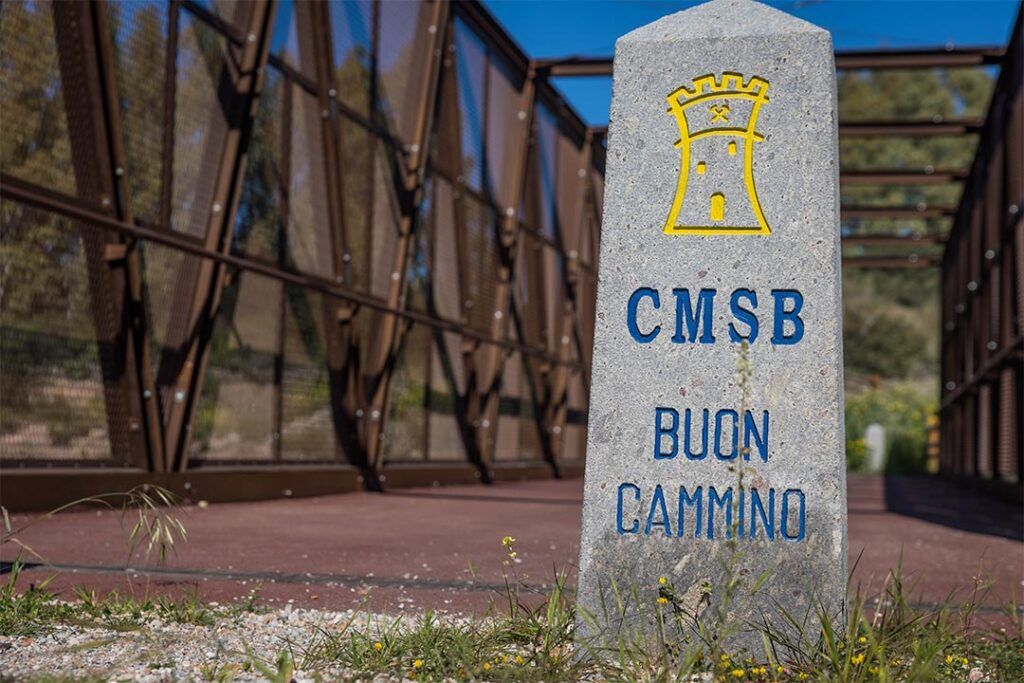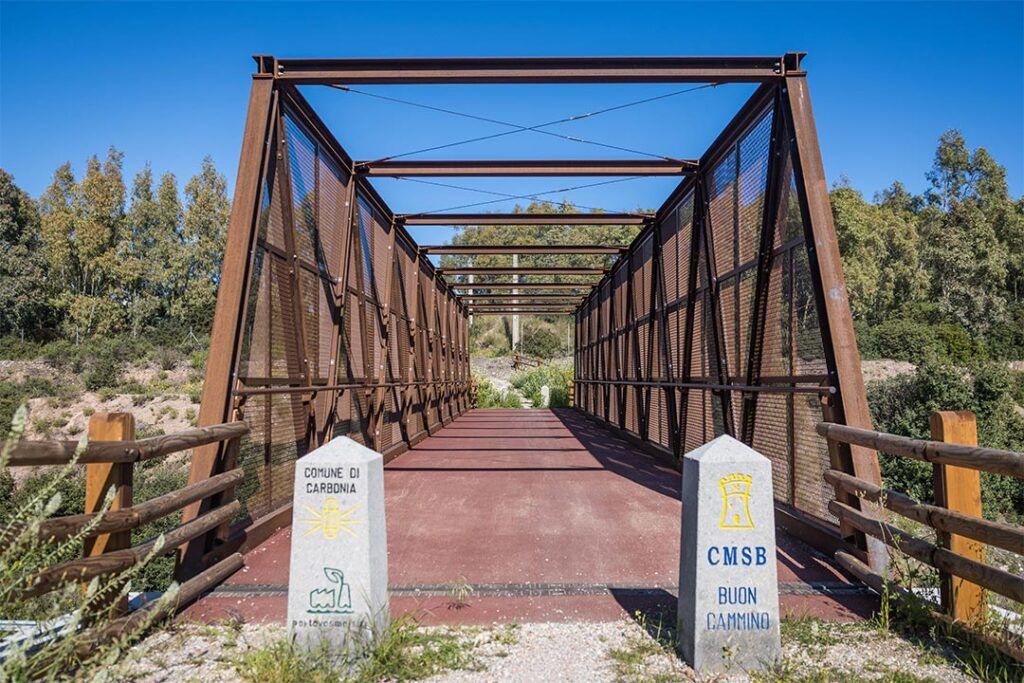Cammino di Santa Barbara, patrona dei minatori
- Home
- Culture, religion and art
- Cammino di Santa Barbara, patrona dei minatori
Cammino di Santa Barbara, patrona dei minatori
Cammino di Santa Barbara, Patron Saint of Miners: exploring the protector of miners
Since ancient times, southwestern Sardinia has been a land of exploration and paths. Originally forged by ancient populations and Mediterranean travelers, these trails served practical purposes, evolving over time to support various activities, including mining. Today, these same paths, with origins dating back to the Neolithic era, have reemerged as the Cammino di Santa Barbara—a route that celebrates the patron saint of miners, inviting travelers to rediscover Sardinia’s history and traditions.
For those seeking unique and meaningful experiences during their Sulcis holidays, exploring this trail is a must. It weaves through one of Sardinia’s most fascinating and enigmatic regions, showcasing the enduring protection and strength that Santa Barbara has provided to those who toiled in the mines.


The trail: structure and development
The Cammino di Santa Barbara is a circular route stretching approximately 500 km, traversing a significant portion of southern Sardinia, including the regions of Sulcis-Iglesiente, Arburese, and Guspinese. This captivating trail weaves through a variety of terrains, from dirt paths and mule tracks to paved streets and charming Sardinian towns where visitors can savor local flavors and immerse themselves in tradition.
Although much of the path winds through natural landscapes, the trail remains accessible, with altitudes reaching around 900 meters but never overly challenging.
For those planning a Sulcis Iglesiente holiday, this trail offers endless opportunities to explore both mountainous and coastal landscapes, with breathtaking panoramic views unique to Sardinia. The Cammino di Santa Barbara is an ideal choice for anyone looking to delve into the island’s unspoiled nature and timeless traditions.
The stages: a journey through history and culture
The Cammino di Santa Barbara is divided into 30 stages, each covering an average distance of 16 km. This structure allows hikers to complete the trail gradually and flexibly, taking time to visit archaeological and industrial sites that enrich every step of the journey.
Along the way, explorers can delve into Sardinia’s mining heritage, with visits to historic mines and archaeological remains, while also enjoying breathtaking landscapes that transition from mountains to the coast.
Each hiker can tailor the trail to their preferences, adjusting the route to suit their fitness level or their desire to deepen their understanding of the places they encounter.
For those seeking a Sardinian holiday that combines spirituality, nature, and history, the Cammino di Santa Barbara offers an unparalleled opportunity. It invites you to walk amidst stunning landscapes and immerse yourself in the millennia-old culture of this extraordinary land.

- Stage 01 – Iglesias a Nebida
- Stage 02 – Nebida a Masua
- Stage 03 – Masua a Buggerru
- Stage 04 – Buggerru a Portixeddu
- Stage 05 – Portixeddu a Piscinas
- Stage 06 – Piscinas a Montevecchio
- Stage 07 – Montevecchio a Arbus
- Stage 08 – Arbus a Perd’e Pibera
- Stage 09 – Perd’e Pibera a Villacidro
- Stage 10 – Villacidro a Monti Mannu
- Stage 11 – Monti Mannu a Arenas
- Stage 12 – Arenas a Su Mannau
- Stage 13 – Su Mannau a San Benedetto
- Stage 14 – San Benedetto a Marganai
- Stage 15 – Case Marganai a Domusnovas – Musei
- Stage 16 – Musei a Orbai
- Stage 17 – Orbai a Rosas
- Stage 18 – Rosas a Nuxis
- Stage 19 – Nuxis a Santadi
- Stage 20 – Santadi a Is Zuddas
- Stage 21 – Is Zuddas a Masainas
- Stage 22 – Masainas a Candiani
- Stage 23 – Candiani a Tratalias
- Stage 24 – Tratalias a Sant’Antioco
- Stage 25 – Sant’Antioco a Carbonia
- Stage 26 – Carbonia a Nuraxi Figus
- Stage 27 – Nuraxi Figus a Carloforte
- Stage 28 – Carloforte a Portoscuso
- Stage 29 – Portoscuso a Bacu Abis
- Stage 30 – Bacu Abis a Iglesias

